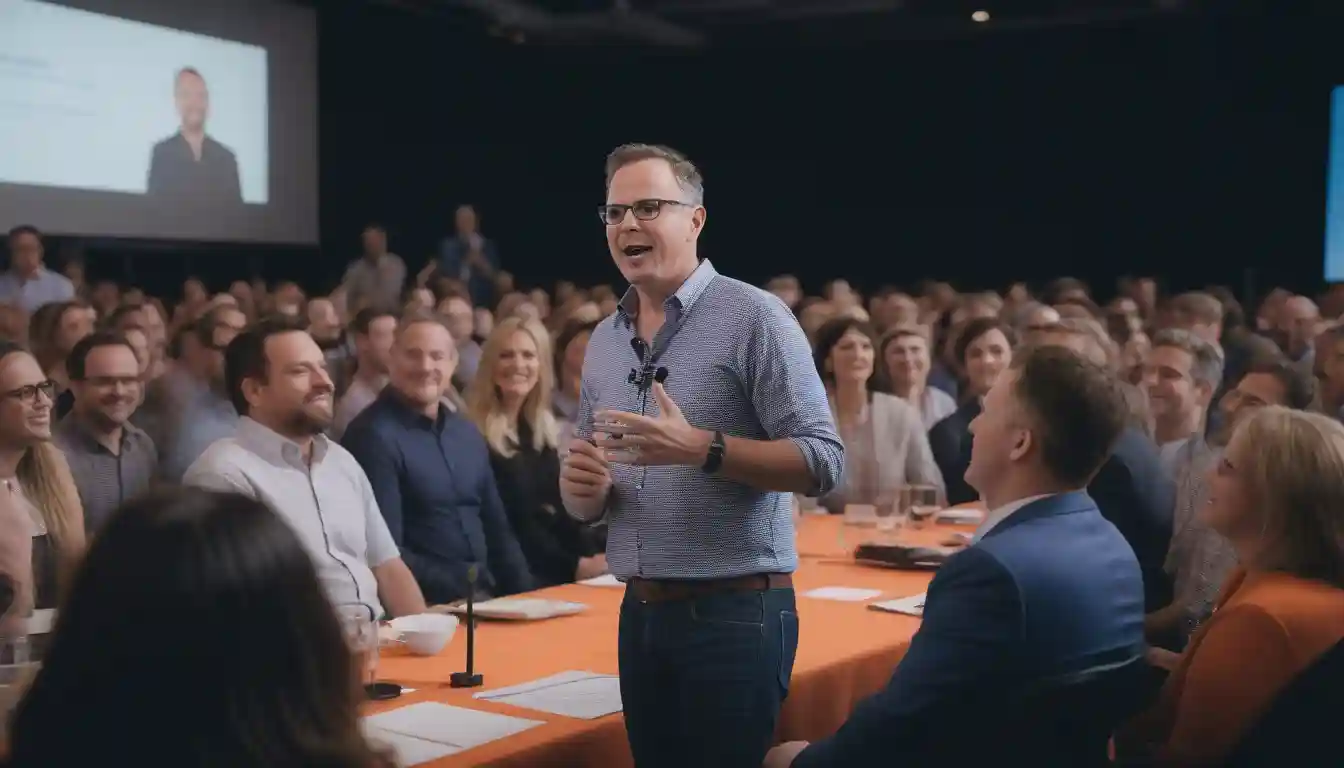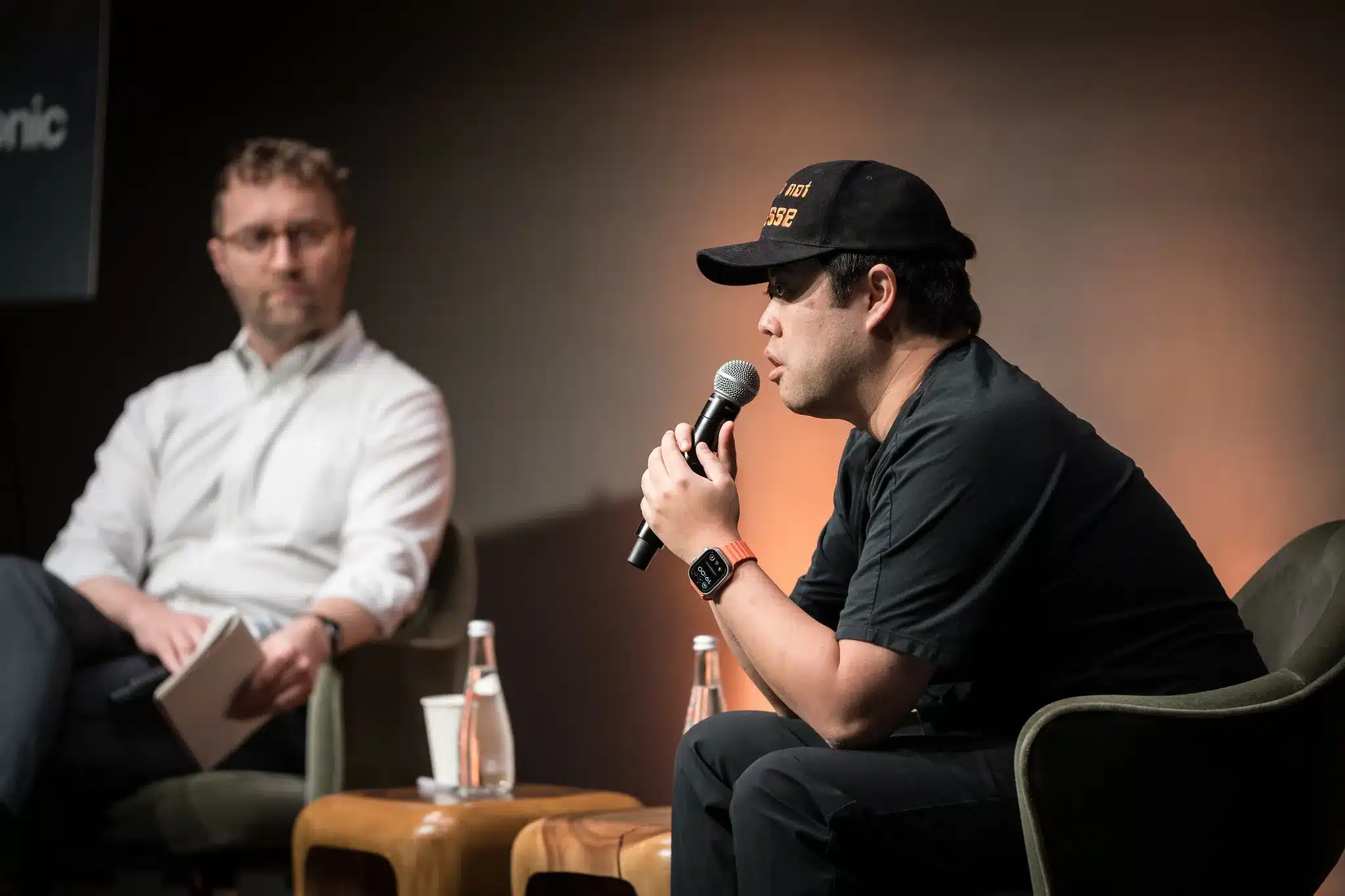Think about a warehouse where robots work seamlessly alongside humans, swiftly picking, packing, and sorting millions of items daily – everything from fragile cosmetics to bulky footwear. The precision is astounding, the speed unmatched, and the need for minimal human intervention. Actually, this isn’t the distant future – it’s the vision Nimble Robotics is bringing to life right now while you’re reading this article.
Today, we’ll explore the journey of Simon Kalouche, CEO of Nimble Robotics – a Stanford University Ph.D. dropout who followed his passion for robotics and belief in himself to build a successful career in the field. What led to the creation of Nimble, and why is the company thriving in the world of automation? Let’s dive into Simon Kalouche’s incredible path and the milestones that brought him to where he is today.
Simon Koluche’s inception of passion for robotics
Simon Kalouche’s fascination with robots began long before he became a CEO. He has always been passionate about robotics, innovation, and artificial intelligence during his studies. His academic journey began at Ohio State University, where he earned a B.S. in Honors Mechanical Engineering with a minor in entrepreneurship in 2014. During his time there, he even co-founded the Special Ops Agile Rugged Terrain Vehicle team, securing significant funding from the US Air Force and NASA JPL for autonomous vehicle research. He also won several awards, including 1st place at the Denman Undergraduate Research Forum and Ohio State’s Entrepreneurship New Venture Creation Competition.
Following this, Simon pursued an M.S. in Robotics at Carnegie Mellon University from 2014 to 2016. There, he designed dynamic robots, including the GOAT, a highly agile jumping and running robot, and co-created the modular Snake Monster robot. His work earned him the Best Applied Paper award at IEEE SSRR 2015 and the prestigious NDSEG Fellowship.
In 2016, Simon began a PhD at Stanford University under the guidance of Dr. Fei-Fei Li and Dr. Ken Salisbury, focusing on AI, deep imitation learning, and robot manipulation at the Stanford Artificial Intelligence Lab.
Leaving Stanford to found Nimble
Simon focused on deep imitation learning, which allowed robots to learn tasks by observing human demonstrations. The work was exciting and full of promise, but something was missing for Simon – he longed to apply these breakthroughs outside the academic world.
“I feel like I’ve always been kind of entrepreneurial in nature, but I didn’t want to just start a company – I really wanted to have conviction in the idea and believe in it very strongly and be passionate about it.” Simon shares in eCom Logistics Podcast.
By 2017, that feeling grew undeniable. While the research was rewarding, Simon felt drawn to the vast opportunities in the real world, where his work could have an immediate, large-scale impact. Simon Kalouche’s journey toward founding Nimble Robotics began with a crucial question: how could deep learning be applied to robotics in a way that allowed robots to perform tasks they traditionally couldn’t handle? While at Stanford in 2016, studying under AI expert Dr. Fei-Fei Li, Simon focused on a method called deep imitation learning. This approach involved humans remotely controlling robots to perform complex tasks, creating a dataset from these actions. Neural networks could then be trained to generalize from this data, enabling robots to eventually replicate those tasks autonomously.
The breakthrough that excited Simon was how this technique could allow robots to tackle the highly variable, repetitive tasks found in real-world industries, particularly in logistics and e-commerce. Warehouses, for example, faced the challenge of handling millions of unique items of different sizes, shapes, and textures – tasks too complex for traditional automation.
Realizing the potential to revolutionize these industries, Simon’s focus shifted from academia to the real-world application of his work. Simon got so excited about this idea that in 2017, he decided to leave Stanford and dedicate himself to deploying this technology, founding Nimble Robotics to create robotic systems capable of solving such problems at scale. This decision marked the start of his journey to transform the future of automation.
Solving real-world problems with cutting-edge technology
Nimble Robotics began its journey by retrofitting existing fulfillment centers, focusing on the critical picking and packing operations within warehouses. Despite advancements in automation, even the most sophisticated warehouses still rely heavily on human labor for these tasks. Recognizing this gap, Simon Kalouche and his team aimed to address the picking task – often considered the most challenging and least automated aspect of warehouse operations.
Initially, Nimble focused on retrofitting warehouses to gather extensive training data on handling millions of diverse products, ranging from footwear to cosmetics. As they progressed, the company adopted a more holistic approach, rethinking what the future of warehouses could look like. Simon says that while the ultimate goal might be a fully automated “dark” warehouse, human workers would always have a role. Some tasks might not be economically viable to automate, particularly those requiring flexibility and adaptability.
What are the advantages of implementing robotics in warehouses?
One significant advantage of implementing robotics in warehouses is the improved accuracy of inventory management. Automated Storage and Retrieval Systems (ASRS) minimize misplaced items, boosting order accuracy and reliability compared to error-prone manual picking environments. Plus, robotic systems provide the flexibility needed to manage fluctuations in demand, particularly during sales events like Black Friday or Cyber Monday.
Brilliant advice from Simon Kalouche
What truly distinguishes successful individuals from those with brilliant ideas that remain unrealized? As Theodore Roosevelt once wisely noted, “Do what you can today with what you have.” This philosophy emphasizes the importance of taking action, learning throughout the journey, and accepting that mistakes are part of the process. Simon Kalouche embodies this mindset, advocating for the necessity of doing what you can right now rather than waiting for the perfect moment or more resources. His approach underscores the value of proactive engagement, continuous learning, and the courage to take risks, all of which are crucial for turning great ideas into reality:
“Most of the time, people say: I need to just go do this one more job and learn this one more skill before I feel like I’m ready to start. I think that’s BS; you ARE ready to start. As long as you have the conviction that you’ll learn along the way, you believe in yourself, and you acknowledge that you don’t know everything, and you force yourself to constantly learn, grow, and evolve – you’re ready to start. You shouldn’t wait for this one more year of experience or this one extra job that’s gonna teach you everything you need to know; I think you should just start and figure it out along the way”
Simon’s vision for the future
Looking towards the future, Kalouche envisions a world where human talent is used for more complex and meaningful tasks rather than repetitive warehouse duties. He argues that while automation can effectively handle tasks like picking and packing, human intelligence should be focused on solving significant problems – such as medical advancements or space exploration – rather than performing mundane tasks.
In his view, humans are capable of extraordinary achievements and should not be relegated to roles that can easily be automated. As such, he advocates for a future where robotics can handle the repetitive tasks in warehouses, allowing human workers to engage in more intellectually fulfilling and impactful endeavors.
“I think these warehouse jobs are better done by robots, like picking and packing all day long. Humans are so intelligent, so smart, so capable of great things, like curing cancer and putting man on the moon and on Mars. We should be solving those problems; we should be educating everyone to solve bigger problems as opposed to wasting brilliant human talent on things like picking up an object and putting it in a box. I truly believe that people are destined to do greater things than just moving things around from one box to another.” says Simon Kalouche.


















